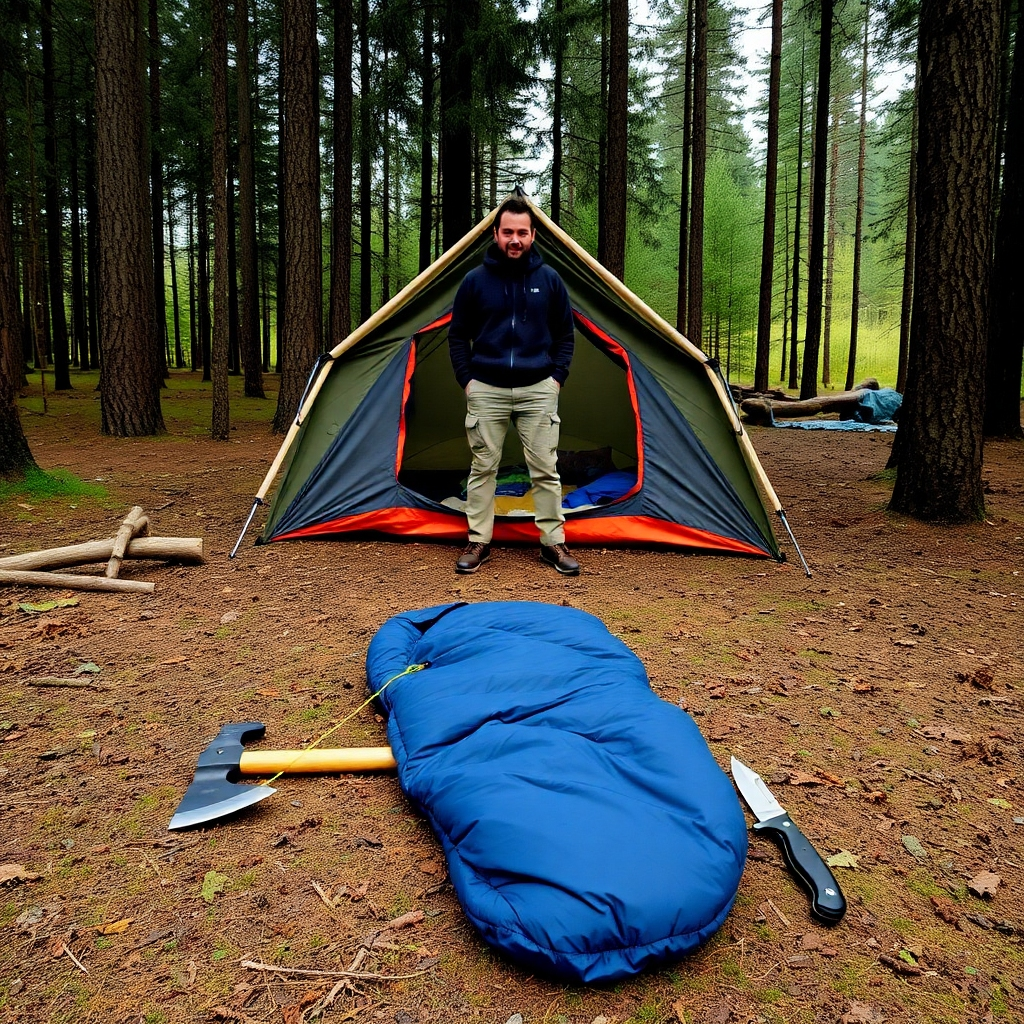For preppers, having reliable shelter-building products is crucial for readiness in various SHTF (Shit Hits The Fan) scenarios. Whether facing natural disasters, prolonged outdoor survival, or unexpected emergencies, the right shelter ensures safety, warmth, and comfort.
1. Tents
Tents are a fundamental option, ranging from ultralight backpacking models to large family shelters.
- Key Features: Weight, weather resistance, ease of setup, and space.
- Season Rating: Three-season tents work for spring through fall; four-season tents handle extreme winter conditions.
- Top Brands: MSR, Big Agnes, and REI offer durable, high-performance options.
2. Tarps
Tarps provide versatility for emergency shelter setups, such as lean-tos, A-frames, or improvised tents.
- Material: Opt for durable, waterproof fabrics like ripstop nylon or polyethylene.
- Reinforcements: Models with grommets and reinforced edges provide better stability.
- Setup Tools: Combine with paracord or rope for various configurations.
3. Bivouac Sacks (Bivy Sacks)
Bivy sacks are compact, minimalist shelters designed for solo survival.
- Protection: Waterproof and breathable materials keep you dry while adding insulation.
- Best For: Lightweight survival setups and extreme conditions.
- Trusted Brands: Outdoor Research and Snugpak provide reliable options.
4. Hammocks with Weather Protection
For wooded environments, hammocks offer a lightweight alternative to ground shelters.
- Features: Many include mosquito netting and weather covers.
- Cold Weather Use: Add an insulated underquilt for warmth.
- Setup: Combine with a tarp for overhead protection.
5. Portable Shelter Kits
Pre-packaged kits include all components needed for a temporary shelter.
- Contents: Typically include a tarp, poles, ropes, stakes, and a groundsheet.
- Ease of Use: Quick setup makes them ideal for rapid deployment.
- Reliable Brands: Survival Frog and Go Time Gear offer various levels of protection.
6. Pop-Up Shelters
Instant shelters that require minimal setup.
- Best Use: Short-term protection against the elements.
- Downside: Less durable than traditional tents in harsh conditions.
7. Natural Shelter Building Tools
Preppers should also have essential tools for constructing shelters from natural materials.
- Hatchet/Saw: For cutting branches and shaping materials.
- Shovel: Useful for digging trenches or snow shelters.
- Multi-Tool: Versatile for a range of survival needs.
8. Insulated Tarps and Shelters for Winter Survival
Insulated tarps and shelters play an indispensable role in winter survival, offering warmth and protection in extreme conditions.
- Material: Designed with reflective surfaces (aluminum or similar) bonded to insulating layers like polyester or fleece.
- Functionality: Retains body heat, minimizes heat loss, and serves as a barrier against cold.
- Size Considerations: Larger tarps offer more coverage but are heavier; smaller ones are more portable.
- Versatility: Can be used as lean-tos, ground covers, or part of snow cave shelters. Some feature grommets for secure setup.
- Alternative Shelters: Four-season tents and bivy sacks offer enhanced winter protection.
- Condensation Management: Ensure proper ventilation to prevent moisture buildup inside the shelter.
- Site Selection: Avoid wind-exposed areas, depressions where cold air settles, and locations with avalanche risks.
- Maintenance: Carry a repair kit with adhesive patches, duct tape, and extra cordage to fix damage on the go.
Conclusion
A well-prepared prepper should invest in a combination of shelter-building products to ensure adaptability in any survival scenario. From lightweight bivy sacks to durable tents and versatile tarps, selecting the right gear enhances preparedness and resilience in emergencies.
We are a participant in the Amazon Associates Program. As an Amazon Associate we earn from qualifying purchases with no additional cost to you. We appreciate your support. Read our complete Affiliate Disclaimer here.



